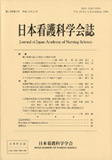Japanese
English
- 販売していません
- Abstract 文献概要
- 参考文献 Reference
- サイト内被引用 Cited by
要旨
この研究の目的は,小手術を受ける幼児後期の子どもが何をどのように表現しているかを明らかにし,それはどのような意味を持つのか分析することである.研究方法はレイニンガーの民族看護学の研究方法を用いた.9名の子どもを中心となる情報提供者とした.14名の看護者と小手術を受ける子どもの母親4名の計18名を一般情報提供者とした.分析結果,5つのテーマが抽出された.
テーマ1:子どもは,あらかじめ説明された手術の経過について,子どもなりに理解していることには,前向きに関わろうと頑張っている.
テーマ2:子どもは,手術の前後で聞いていなかったことに直面すると,途中で説明も加えられないため,受け入れるのが難しく,納得できずに苛立ちを感じている.
テーマ3:看護者や母親は,麻酔から覚醒し部屋に戻った時点で手術は「終わった」と思うが,子どもには点滴や痛みがあるため,なお頑張りつづけなくてはならず,手術は「終わっていない」.
テーマ4:手術前後において,看護者や母親は子どもの言動を理解できず戸惑っているため,子どもは一貫した支えを得られない.
テーマ5:入院時,子どもは自分のベッドであることを説明されると,子どもにとってベッドは拠り所になる.
Abstract
The purpose of this study was to identify what preschoolers expressed and the meaning of those expressions when they are going through minor surgery. Leininger's ethnonursing method was used. Nine children were selected as the key informants. Eighteen general informants were selected ; fourteen nurses and four mothers of some of the children. From the data analysis, five themes were discovered.
Theme 1: Children do their best when they understand the explanation of the operation before it is performed.
Theme 2: When children are faced with a situation they do not get an explanation before or after the operation and no explanation is added alone the way, it is difficult for them to accept the situation and they feel irritated.
Theme 3: When children awake from anesthesia and returned to their rooms, nurses and mothers consider the operation to be finished. However, for children, the operation is not over since they must continue to do their best to deal with pain and intravenous injection drips.
Theme 4: Children cannot receive consistent support from their mother and nurses because mothers and nurses have had difficulty to understand the meaning of the childrens' behavior before and after operations.
Theme 5: If children were told that the beds were theirs when they were hospitalized, the beds become their base during hospitalization.
Copyright © 1999, Japan Academy of Nursing Science. All rights reserved.


